Call Us Now
TEL: +86-4000988557;
Teams: gfreex@hotmail.com;
WeChat: Troysupply_com;
QQ ID: 8936906.
We had once when the DJI Mecha Master RoboMaster S1 was released.
At that time, in addition to the cool appearance that shocked the industry, we made a point of view: the scalability and playability of the RoboMaster S1 product did not seem to be as high as those of other programmable educational robots.
Sure enough, just over six months after the release of RoboMaster S1, DJI brought us this RoboMaster EP (Mechanical Master EP Extended Education Kit), a set of educational programming kits that support expansion.
Speaking of the kit, Wan Yang, director of marketing at DJI RoboMaster, said at a press conference on March 9. "Compared to the RoboMaster S1 released last year, EP is more targeted at school use scenarios, and has made a lot of openness in software and hardware Adjustments. "
It can be said that RoboMaster EP relies on the basic platform of RoboMaster S1. And this time, it has evolved into a set of textbook products that can enter the classroom.
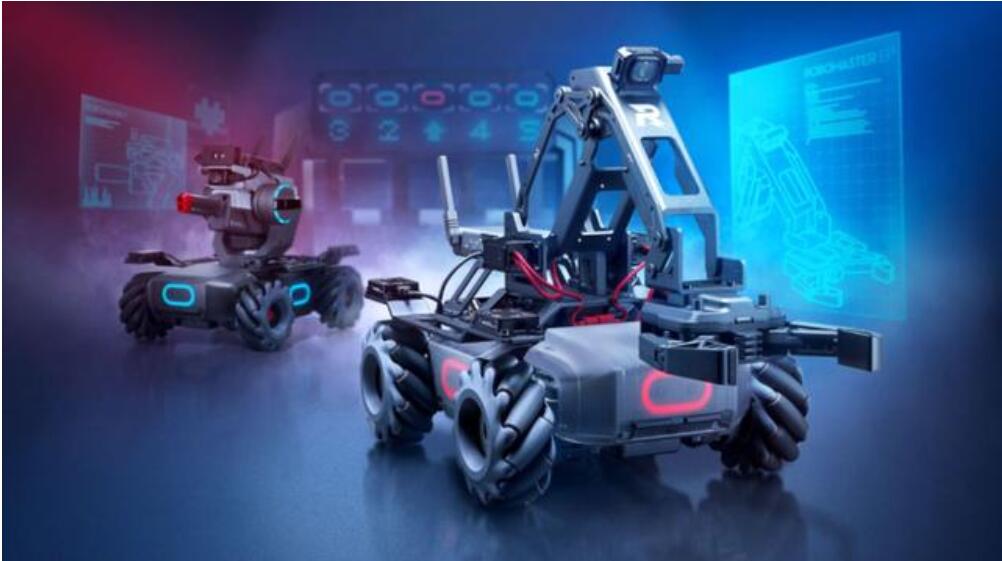 Tank turn
Tank turn
RoboMaster EP can be said to make up for this part of the regret slightly. RoboMaster EP inherits the structural advantages of Mecha Master S1. The new hardware includes high-performance servos, educational robot arm,
robot claws, infrared depth sensors, sensor transfer modules and power
transfer modules. It looks like various official accessories have been
added to the previous S1 power base.
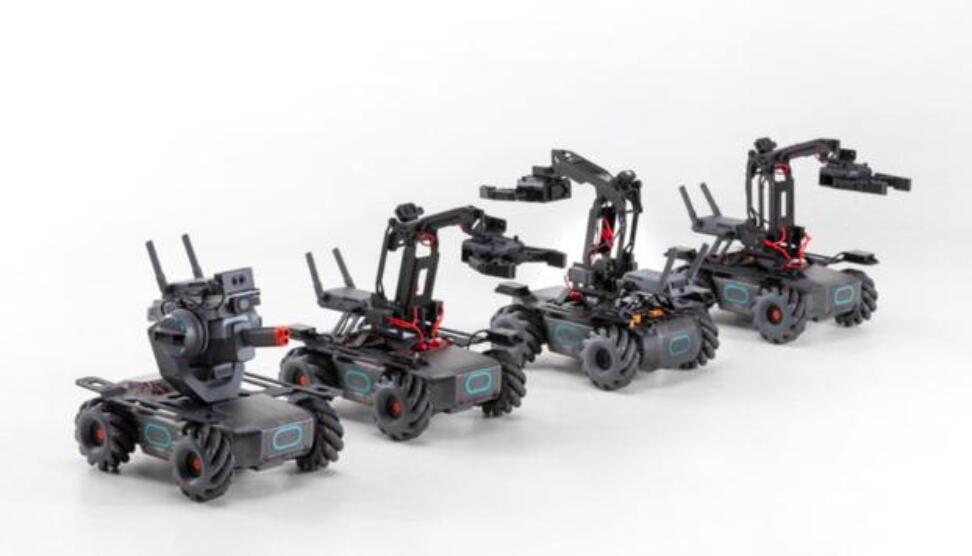
You can think of it as using the previous mech "tank" chassis, now you can transform it on top. For example, a sorting robot arm:
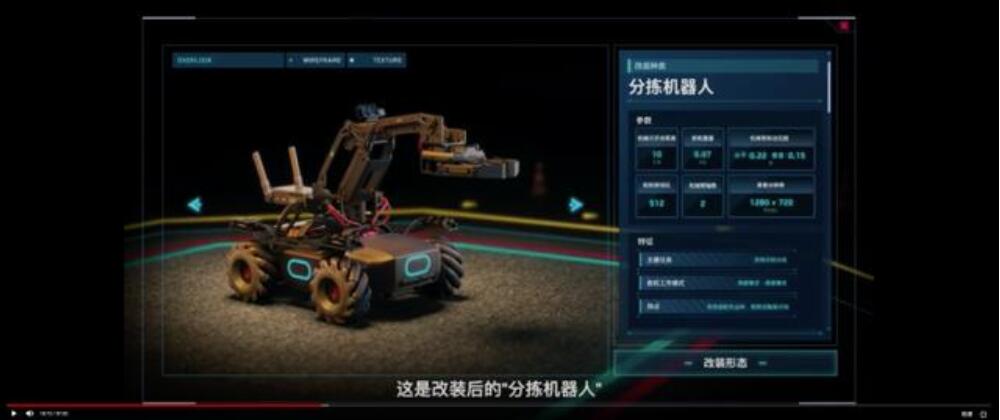
Or a transport vehicle:
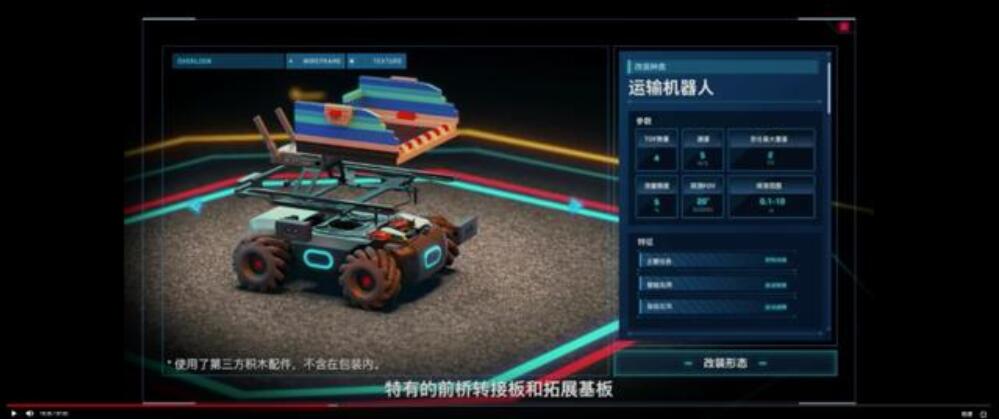
At the press conference, the official provided about two to three variations. But in theory, combined with this platform, more products can be evolved. For example, a slightly more complex Transformer.
Choosing a dance with several EPs is not a problem:
For EP, it is not only compatible with its own accessories. The purpose of DJI is to make it more open.
RoboMaster EP supports external third-party open source hardware such as "Micro: bit", "Arduino", and "Raspberry Pi". At the same time, the artificial intelligence chip platform Jetson Nano and SDK are used for model training and scene recognition. At the conference site, RoboMaster EP also realized the instructions to take pictures of users through voice control, which is the result of cooperation with Baidu Brain.
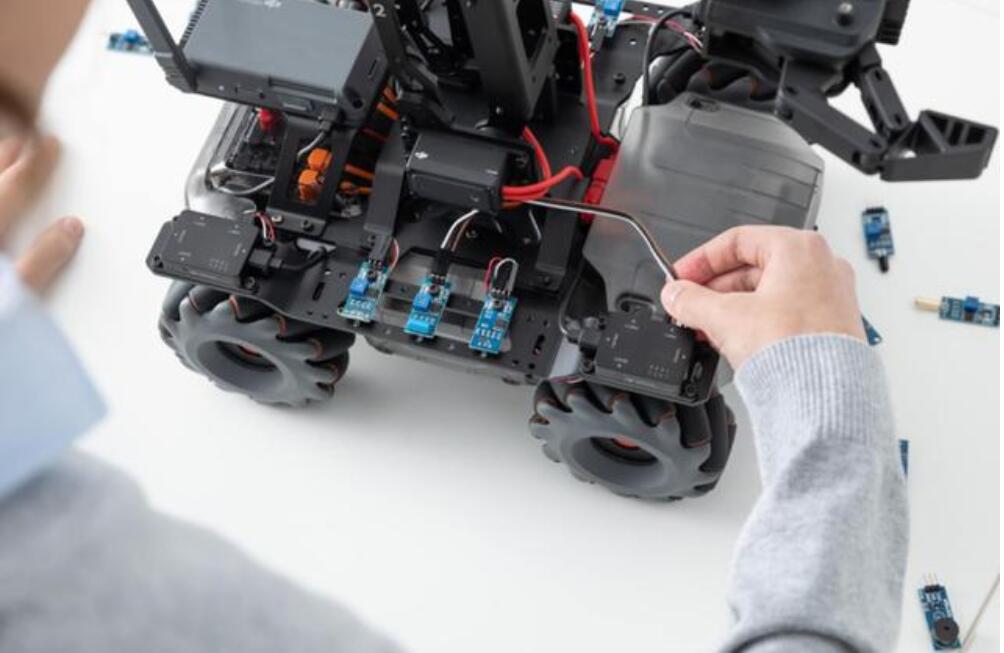 Using artificial intelligence technology, some experimental groups even built a blind guide robot.
Using artificial intelligence technology, some experimental groups even built a blind guide robot.
RoboMaster EP product manager Li Zhuoquan said that Mecha Master EP has a total of 132 parts, more than 50 sensor modules, 9 power modules, and 55 programmable devices. The RoboMaster EP opens the DJI DJI official SDK and supports more than 50 programmable sensor interfaces. Teachers and students can obtain data such as sensor modules, video streams and audio streams through computers and mobile clients to achieve richer gameplay and educational purposes.
to B, Industry-University-Research Cooperation
In fact, for DJI education itself, EP carries more significance.
DJI mentioned at the press conference that RoboMaster EP is the second educational robot of DJI. It has the characteristics of one machine with multiple forms, compatible with multiple hardware, support for multiple software platforms, and open SDK.
But EP is not an upgraded iteration of S1.
According to an official document from DJI, Master Mech S1 is an educational and educational robot tailored for the mass consumer. "Through fun parent-child interaction and rich gameplay, S1 is an enlightenment mentor for children's interest in understanding robotics and programming."
EP is a B-side solution for education. It is compatible with multiple types of hardware, as well as a variety of educational solutions such as supporting courses and events. It brings students from basic entry to higher subject areas.
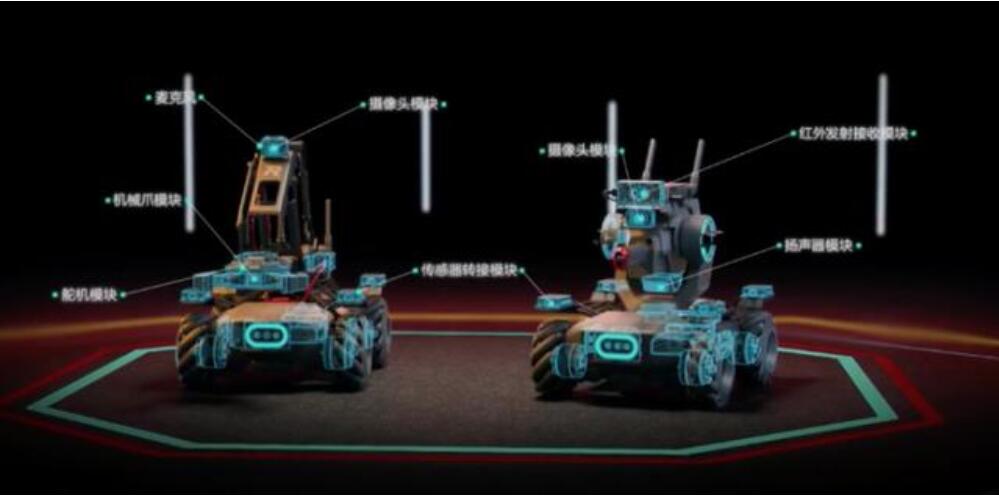
For the subject area, the focus is actually on cooperation with educational institutions.
Beijing Jingshan School recognizes the programmability of this open SDK. Teacher Li Jing believes that the SDK can easily realize artificial intelligence recognition, voice control, and other interesting functions. "Student acceptance is significantly higher."
Training teachers requires more complete course materials. DJI and East China Normal University Press organized the top domestic robot education experts, industry-experienced engineers, and primary and secondary school curriculum writing teams to create a complete set of robot education curriculum resources for RoboMaster EP in China.
It is worth noting that this is three sets of "Robots and Artificial Intelligence Basics" three textbooks for junior high school students, which cover student books, teacher's manuals, engineering diary and teaching courseware.
At the same time, programming education is also paired with competitive sports. The DJI RoboMaster Youth Challenge will also be launched. Similar to the RobotMaster event, the event competition also includes multiple technical point tests, such as the robot's automatic line inspection ability, machine vision recognition and perception ability, and robot arm intelligent control ability. Really let the robot education start from the baby.
New battlefield
"The vision of running a high-quality and high-level technical event and developing education professionals does not conflict with the goal of successfully operating this business in business." DJI Wanyang is accepting the inclusion of PingWest products (public account : Wepingwest) mentioned in media interviews.
In fact, DJI launched the RoboMaster Mecha Masters competition in 2015, with a cumulative investment of 350 million in five years. During the competition, DJI R & D will also draw inspiration. In other words, the RoboMaster event has derived a product called the Mecha Master RoboMaster S1. From the RoboMaster S1, EP is launched, and from the EP, it returns to the RoboMaster Youth Challenge. "Since preparing for the RM event, we are constantly trying to diversify our business operation models."
Not only is the product itself changing, it is also a transformation of DJI Technology in product form and direction.
In the past, consumer drones were the product of geeks, and product prices were basically in the thousands to tens of thousands of yuan. Over the past period, DJI has gradually moved towards the imaging system. For example, the OSMO series has been launched, and the product price has also dropped from thousands of yuan to several hundred yuan.
Drones and imaging systems are actually professional markets. Although DJI has targeted a more affordable price range for its product portfolio in the recent past, it is not yet a completely mass market.
The education market may not be the masses either. But the product is for 9 to 19-year-olds. With the help of RoboMaster EP, RoboMaster events have also transitioned from college students to younger youth groups.
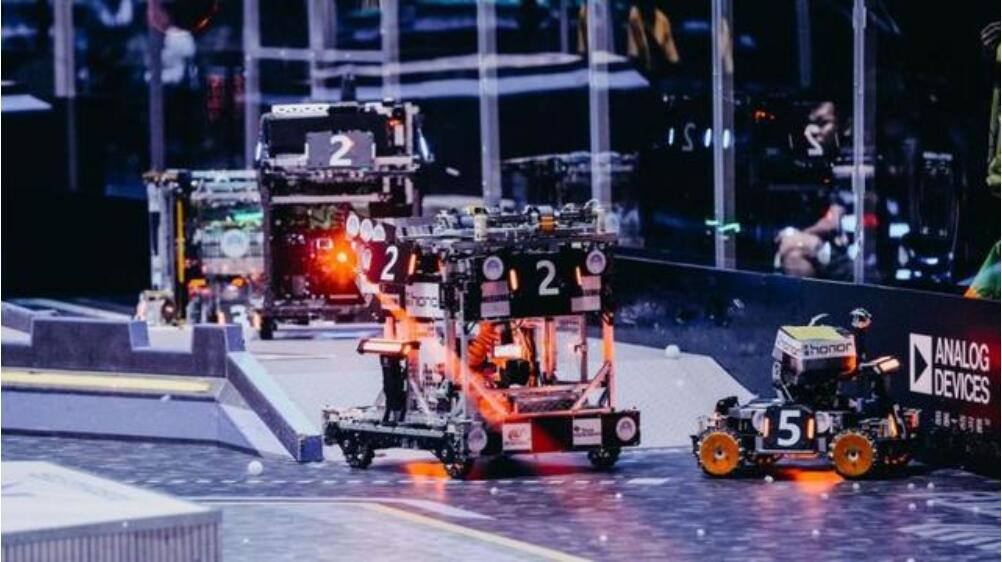
"The Mecha Masters Junior Challenge to be held in 2020 will sink to the K12 stage (9-19 years old primary and middle school students) for the first time in 6 countries or regions."
Talking about the future of DJI education, Wan Yang said that there are several directions. The first is to strengthen education research and provide a richer and higher-quality curriculum system; the second is to deepen the industry-university-research cooperation and forge a full-stack education solution; then DJI insists on R & D investment and is committed to creating a more targeted and open software and hardware platform .
 Online service
Online service 4000988557
4000988557 sales1@troysupply.com
sales1@troysupply.com sales2@troysupply.com
sales2@troysupply.com Richard Liu
Richard Liu TROY
TROY 8936906
8936906 Troysupply_com
Troysupply_com